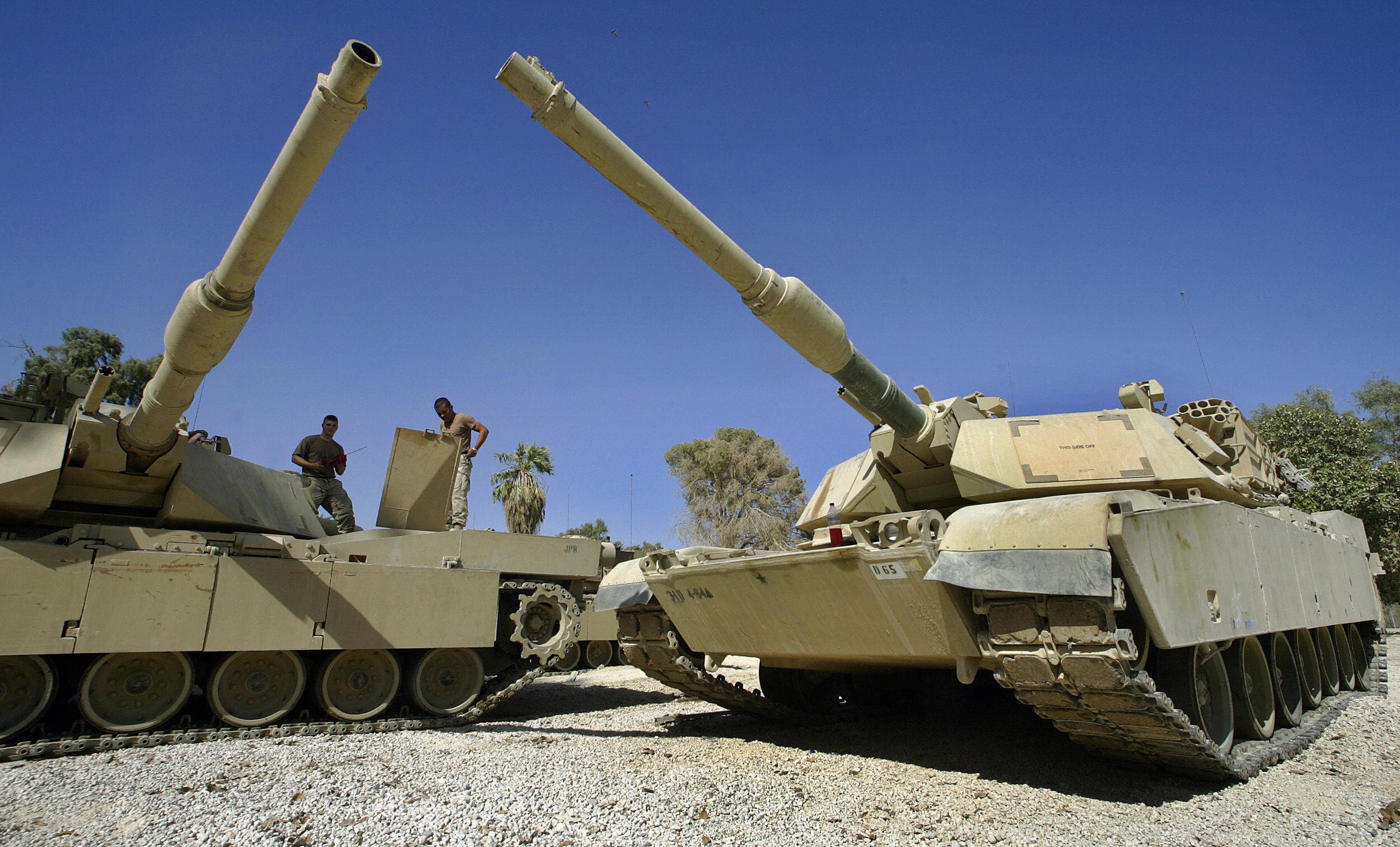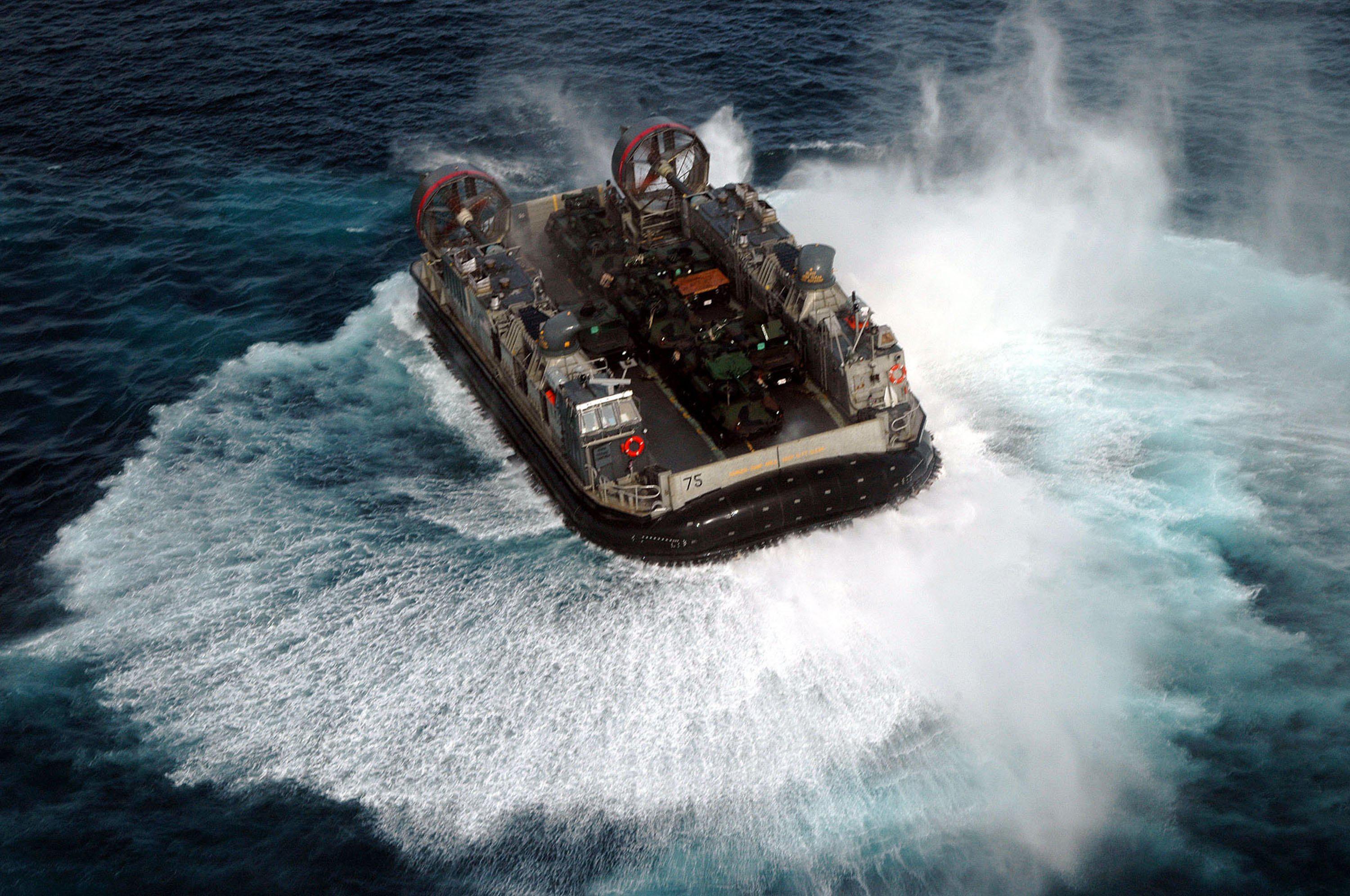This question originally appeared on Quora.
Answer by Paul Frick, former infantry staff sergeant, U.S. Marine Corps; three combat tours, three years as an embassy guard and detachment commander:
The most important difference between 1944 and today would be in the realm of guided munitions. I once heard that a single F-15 packs as much firepower as an entire squadron of World War II–era bombers when you take into account explosive weight and the percentage of ordnance you can get on target. (Keep in mind, the F-15 is a fighter/bomber, not a dedicated bomber. If we start talking about the B-52, things get even crazier.) Additionally, naval gun fire support has come a long way since the 1940s. U.S. destroyers and cruisers now only come equipped with one or two 5-inch main guns. In the 1940s, 5-inch guns were almost considered an afterthought. With improved fuses and nearly automatic rates of fire that can be achieved with today’s weapons, you wouldn’t need the hours and hours of shelling they used during World War II landings.
As far as the landings go, with today’s amphibious landing tactics and equipment, you wouldn’t need to land at Omaha Beach at all.
The Landing Craft Air Cushioned, or LCAC, is just one of the many ways the U.S. Navy and U.S. Marine Corps get troops from ship to shore. The main difference between an LCAC and the landing craft of yore is that the LCAC can access almost any beach in the world and can travel across dry land. Furthermore, it can achieve incredible rates of speed compared to the Amtracks of World War II—I think around 70 knots when not weighed down much. Today, the U.S. would be able to basically avoid any defensive strong points and just stick their landing forces wherever they figured was the least defended.
Helicopters, in widespread use since the Vietnam War, allow entire infantry companies and battalions to be shuffled about at incredible speed compared to the 1940s.

Photo by Liu Jin/AFP/Getty Images
The M1A2 Abrams main battle tank would probably be as close to invulnerable as anything ever employed in warfare. The only reasonable option for destroying one with 1944 equipment would be swarming it with infantry and trying to get a grenade inside. This technique was costly during World War II. Against an Abrams, with a wingman that can just shower his buddy with high-explosive rounds that do nothing substantial to the armor …
As far as the individual service member is concerned, the primary difference is the body armor. Ceramic plates and flak jackets have greatly increased the survivability of the infantryman. Back in World War II, your armor was a millimeter of cloth. Today, it contains plates that would actually be capable of stopping pretty much any small-arms round the Wehrmacht utilized—7.62 armor piercing is the limit, I believe. A quick look at the World War II killed and wounded ratio (1 to 1.65) versus the Operation Iraqi Freedom killed and wounded ratio (1 to 7.3) shows that even if nothing but the current body armor was added to the equation, it is likely that the U.S. would have greatly reduced the number of troops killed on D-Day. On the flip side, the infantry of World War II would be much faster and more agile, as they weren’t towing around 50-plus pounds of gear. So you have a classic heavy infantry versus light infantry situation here.

Photo by Jason Huffine/U.S. Marines/Getty Images
The MK19 automatic grenade launcher: Designed for use against troops in the open and in trench lines, light armored vehicles, urban strong points, and light fortifications, this 76.2-pound beast is technically man-portable (by someone’s standard) and is widely employed on mounted assets. It’s capable of firing 325 to 375 40-mm grenades per minute, and there is arguably no more intimidating weapon in the U.S. arsenal that is commonly used in firefights. I have personally been within 25 meters or so of the beaten zone of someone unleashing a long burst of grenades, and it was, shall we say, disconcerting. This is probably the one weapon capable of allowing an individual to single-handedly end a firefight.
Today, many infantry companies will have communication assets down to the fire team level. This allows for much faster response times to dealing with threats or reorganizing after a firefight or simply getting troops to move around where you want them. Radios at the platoon level were very rare during World War II, and what was in play was of limited range and had no encryption capabilities. When I was in a motorized heavy weapons platoon, we had a dozen PRC-119’s, satcom radios, Blue Force Trackers, etc; we probably had comm capabilities that entire divisions during World War II would have drooled over. And we had 40 dudes.
While the small arms themselves haven’t really come a long way, the accouterments certainly have. Every infantryman today is probably equipped with, at minimum, a four-power scope, night-vision goggles, and a laser for use with night vision. One-quarter of infantrymen will have a grenade launcher. Another quarter will have a light machine gun. This allows for the ability to achieve combined arms effects using just a single fire team. And the night-fighting capability, with nothing else, would be a game-changer.
The one thing we would be at a disadvantage in would be combat experience. The Germans had been fighting for five years by the time the U.S. actually got into France. Of course, this was an issue during the actual D-Day landings and didn’t hamper things too much, probably because the Allies were facing off against the JV squad, so to speak. At the same time, our military back then was well-trained for large-scale battles, as opposed to how the U.S. military is organized today. Whether or not the current infantryman would fare well is anyone’s guess.
Free fun fact: One thing that hasn’t changed is the M2 .50-caliber heavy machine gun. Supposedly something like 95 percent of the M2s in use currently were originally built during World War II. The ammunition, however, has received quite the upgrade (SLAP, API, Raufuss, all fun stuff).
Another fun fact: The United States uses a military doctrine termed “rapid domination.” (“Shock and Awe” for the sound-bite term.) The Gulf War and the initial invasion of Iraq during Operation Iraqi Freedom are two examples of this doctrine in use. The basic concept involves gaining air superiority, using tactical and strategic bombers to disrupt and destroy enemy command and control, employing a wide range of offensive maneuvers (amphibious landings, paratrooper drops, armored thrusts, infantry assaults on defensive positions) simultaneously in order to paralyze any decision-making ability of the opponent. This military doctrine is heavily based on the so-called Blitzkrieg doctrine of Nazi Germany.
More questions on Military History and Wars:
